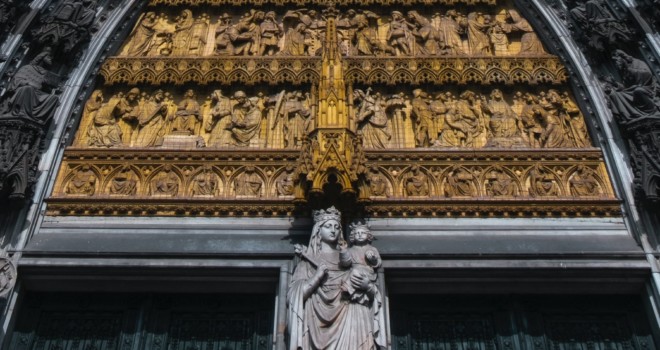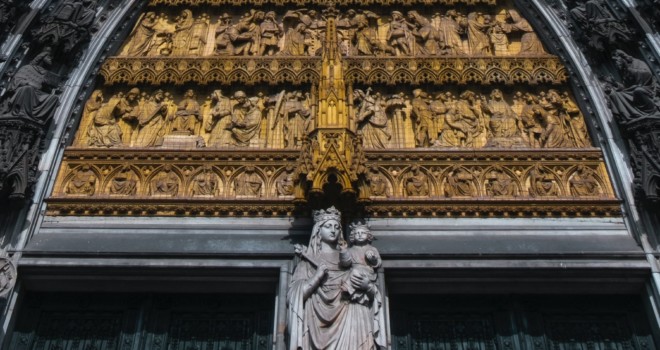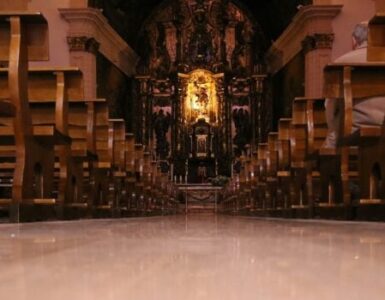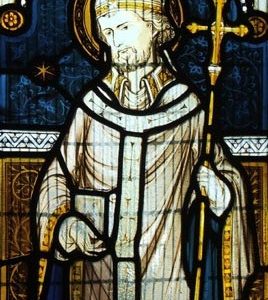The Facts of Life Series: The Church
It is a fundamental fact of history that Jesus started the Catholic Church. From the moment Jesus renamed Simon the apostle, His intentions were clear. Simon was now Peter, the “rock.” Jesus’ rock. The rock, upon which He would build His Church. Our Church. The Roman Catholic Church. A Church almost two millennia old. The single and signal certainty of all human civilization for almost two thousand years.
Despite the many tests of time, despite the ravages of conflict and corruption, despite the many intellectual and moral, political and cultural challenges of the past two thousand years, both external and internal, still Holy Mother the Church stands. And, she still stands as the beacon of life’s many truths and the bearer of the good news of the Truth.
For over the history of humanity, no other government or institution or religion has survived more and accomplished more, endured more and affected more than the Catholic Church. For it has resisted enemies within and without. It has resisted monarchs and dictators, heretics and skeptics, autocrats and aristocrats, fascists, communists and even capitalists.
And, it has done so not without errors, not without sins of grievous proportions and pernicious persistence, even now in our present day. For it has been too harsh and too lax, too worldly and too isolated, too political and too timid. Yet, still it stands, a worldwide religion with over one billion members, a truly universal church in a world of many countries, cultures and centuries.
But, what is this enduring and eternal Church? Well, on a simple level, it is really an institution built on clear and comprehensive truths and on He who was and is the Truth. This is the Church, the church that endures. For its truth, its dogmas, its doctrines, its disciplines endure because they are simple yet sophisticated, provocative yet certain, debatable yet irrefutable. And, over the many centuries, these tenets have withstood all manner of scrutiny, criticism and debate from friends and enemies, from the faithful and the faithless.
Yet, when the Church has made mistakes, they were the decisions and actions of Catholic people, lay and religious. When the Church as an institution has done wrong, has committed and permitted evil, it has done so in direct defiance of its teachings, its truths, its Founder. And, this reaches right down to our present day. For the problem with the Church is not its many truths, but its deviance from these truths individually and collectively over its many centuries.
For the dogmatic Church is the one, true church, when it comes to its truth, its defining dogma and doctrines. The Church is where the perfection of truth and love, goodness and beauty find its clearest expression and its most intimate experience. This is where the nature of God and His plan for mankind is most perfectly and completely stated in simple ways as Jesus did to the common people of His day and ours, and in sophisticated ways for the curious and contentious among us who seek this truth with a more circumspect eye and with a longing for the deeper profundities of God. For truth is what makes us Catholic.
Yet, just as each of us sin, despite our efforts of living in complete accord with the breadth and depth of the fullness of Catholic truth, so too do those who work within the Church. For the lay and the religious working within the institutional Church all fail to meet fully the standards of love and truth, as individuals. In a similar way this routine failure can infect the institutional Church at times and has down through its history.
Yet, many sins and failures on the part of the institutional Church present a darker, more deleterious side of such sinful failings. For these failings, these sins require deliberate acts, acts which require collective decision making and administrative application. These are not the sins of impulse or even of personality. These are sins of deliberation and intentionality in application.
For example, the sexual sins of various priests are their sins, sins of passion and personality. But, when the Church’s administrators fail to act in a manner that includes a strong sense of justice, as well as loving concern for the victims and prudent prevention for future perverse acts, then the Church sins on a most grievous level. For this is done deliberately and is affirmed by its continuance over time.
A prime motive for these decisions and acts is about preserving the institutional Church’s image and its financial assets and viability. Fear is the prime motive for these institutional sins, though avarice and comfort are secondary considerations. For the Church’s leadership is deeply concerned with the state of the Church, its image and financial solvency. But, they mistakenly miss the point of the problem and misapprehend the purpose of the Church.
For the mission of the Church is to pursue by all moral means the Great Commission, given to it by Jesus, the Incarnation, the Redeemer of all mankind. For the institutional Church and all its adherents are to make disciples of all nations sharing the Good News of salvation. That is the mission, an encompassing mission of many derivations and implications. A mission in which every Catholic must play a part. A mission which its clergy and its collective institutions play an even more significant role.
Yet, the Church’s many administrators often emphasize the institution’s prominence and power, its financial interests and its political advantages at the expense of its true mission. This is often the subtle trap of leadership where the institution subtly and implicitly becomes the mission, rather than keeping the mission as the mission. This common leadership error becomes even more egregious because of the religious nature of the Church and its many interests and the geographic and cultural nuances, where it pursues its ministries.
At times, the clergy’s fear and their administrative responsibilities have led them to place undue and inappropriate importance on the institution’s political power and influence, its public image and its financial wellbeing at the expense of its moral rectitude and faithfulness to its mission and its dogmas. These errors are not new, not if you look at its history. It is almost a historical given.
Yet, even these many sins and egregious errors do not undermine the Church’s truth, only the credibility of its leaders. Be they parish priests or bishops and cardinals, or leaders of religious orders, Vatican ministers or even the Popes, this is where the true guilt lies. It lies not with the doctrinal Church, but with the institutional Church’s many leaders.
For their guilt is true because the truth of the Church, particularly its moral truths, deem it so. For this historical tale of their many sins gives us all a clear and consistent confirmation of the Church’s truth. This tale of sinfulness also affirms our fallen state, the daily evidence of original sin. This sinful tale reminds us all of our need for redemption and salvation, the need for a Savior.
And, this is the Good News. That God Himself became man and taught us how we should live and what we should be inside and out. And, that Jesus, the Incarnation, Immanuel – God with us, came to pay the due penalty for our many sins. For the sins of His priests and His people. For the sins of the old, the young, the hurting and even the hurtful. For the sins of every man, woman and child who has ever lived or will ever live. For each and every one of us needs forgiveness, redemption and salvation.
And, this is the mission of the Church. Its reason to be. Its purpose. The purpose that was the burden placed on Peter, the apostles and any and every other convert. Yet, this burden is not ours alone to bear. For God does not leave us alone to do His work. He promises to be with the Church He started and be with each of us now and until the ending of this age.
For He is willing and desirous to be ever restoring and redeeming His institutional Church. Bringing it closer to the truth and love, the goodness and beauty of His very nature. Making each and every person more radiant children of God. Drawing all His sons and daughters into the profound and joyous intimacy with each other and with Him. For He wants the institutional Church to be the full embodiment of the Church’s dogma, the shining witness of God’s truth and His love.
And, He promises He will help us individually and institutionally. For His Church is home, God’s family home. A comforting and a challenging home. An inspiring and encouraging home. A home whose Father is perfect and perfectly loving and who promises to be with us “even unto the end of the age.”
✠
This article is the thirteenth part in an extended series on the “The Facts of Life” by F. X. Cronin. You can start with part one by clicking here and see previous entries by clicking here.
We also recommend Mr. Cronin’s latest book, The World According to God: The Whole Truth About Life and Living. It is available from your favorite bookstore and through Sophia Institute Press.
Photo by DynamicWang on Unsplash













